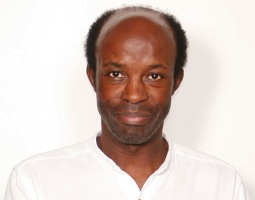
Scientists at the colossal Large Hadron Collider (LHC) facility located beneath the Swiss-French border have turned up the dial on the highest-energy experiment ever attempted — and their colleagues in the Florida State University Department of Physics now have a bird’s-eye view of the proceedings.
A small office within the university’s physics department is one of 35 sites worldwide — and one of just eight in the United States — that has been set up with video and Internet feeds that connect directly with the LHC. Via these feeds, Florida State researchers and their students will be able to monitor experiments at the collider around the clock — and even make changes based on what they observe.
“This is a tremendously exciting time to be involved in high-energy physics,” said Harrison Prosper, Florida State’s Kirby W. Kemper Professor of Physics and a Distinguished Research Professor. “The Large Hadron Collider has the potential to unlock many of the mysteries of the universe that science has pondered for more than a century. Our students are quite fortunate to have a front-row seat as history is being made.”
All of the 35 sites, including Florida State’s, “went live” on Tuesday, March 30, the date that the LHC, the world’s most powerful atom-smasher, was turned up in an attempt to reach a world-record energy level of 7 teraelectronvolts. Scientists hope that such a massive amount of energy will allow them to recreate conditions similar to those that existed during the Big Bang; barring technical problems, the collider is expected to run at that level for 18 to 24 months.

Just how powerful is 7 teraelectronvolts? Prosper offered an automotive analogy.
“If every person on Earth owned a car, and the batteries from all those cars were connected together in a series, the voltage across this enormous chain would be huge — but still only one-fiftieth of the voltage needed to increase the energy of a proton from zero to 3.5 teraelectronvolts (that is, 7 teraelectronvolts when two protons collide),” he said.
In all, some 30 members of Florida State’s physics department, including faculty members, research scientists, postdoctoral researchers and graduate students, are involved in a specific experiment at the LHC known as CMS, short for “Compact Muon Solenoid.” CMS is an international collaboration involving some 3,600 scientists, engineers and technicians from 38 countries that uses a large machine known as a particle detector to record data on various nanoparticles released when the LHC smashes protons together with tremendous force.
“Among other things, we’re hopeful that these powerful collisions will provide us with our first glimpse of a still-theoretical fundamental particle known as the Higgs boson,” said Todd Adams, an associate professor of high-energy physics at Florida State and a CMS participant. “Science still doesn’t fully understand what gives mass to all matter in the universe; we think that the Higgs boson may hold the answer.”

Adams added that observations culled from data gathered by CMS could also help explain the nature of so-called “dark matter,” which is believed to comprise about four-fifths of all matter in the universe — but which has never been directly observed because it isn’t composed of atoms, unlike the form of matter that is most familiar to us.
In the new “CMS center” at Florida State, researchers and students will be able to sit at several computer workstations to monitor the progress of the CMS experiment and make minor adjustments as needed. They also will be able to observe live video of the connections on a pair of large, high-definition TV screens that were recently installed.
“The 35 CMS centers will be a great tool for promoting collaboration and helping scientists all over the world to communicate with one another on this massive experiment,” said Andrew Askew, an assistant professor of physics at Florida State and another CMS participant.
“What’s more, this is a truly historic event,” he said. “The Large Hadron Collider is the single largest machine, and represents the largest scientific endeavor, in all of human history. It will generate the highest level of energy ever achieved by mankind, and Florida State will be front and center for all of that.”
Every member of Florida State’s High Energy Physics Group is involved in the LHC project in some way. The group includes theoretical physicists Jeff Owens, Laura Reina, Takemichi Okui and Bernd Berg, and experimental physicists Todd Adams, Andrew Askew, Susan Blessing, Kurtis Johnson, Sharon Hagopian, Vasken Hagopian, Harrison Prosper and Horst Wahl.
Three other Florida universities — Florida Atlantic University, Florida International University and the University of Florida — also unveiled CMS centers on March 30.




